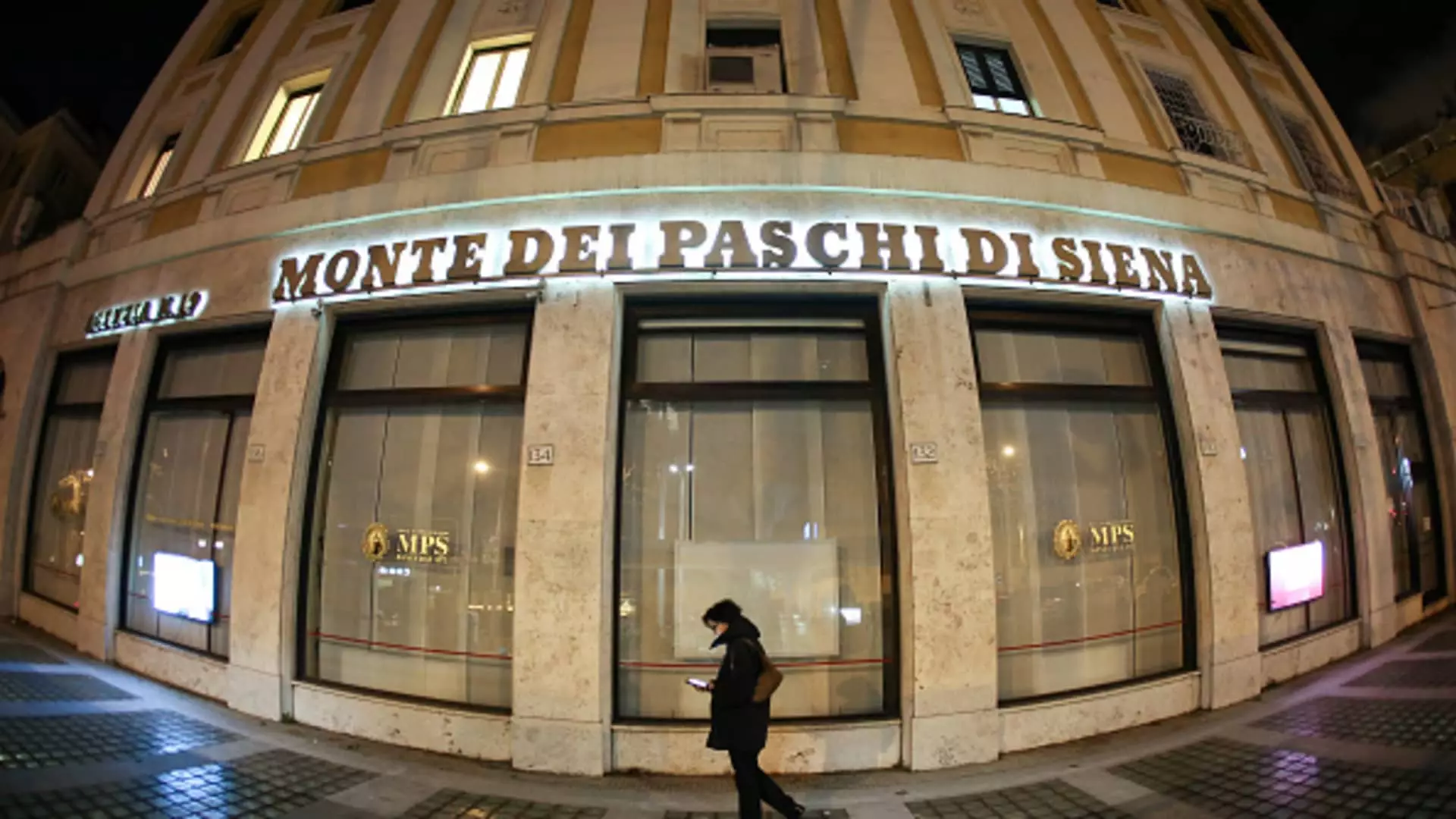Italy’s banking sector has long been synonymous with both historical prestige and modern turmoil. The world’s oldest bank, Monte dei Paschi di Siena (MPS), recently made headlines by launching a sweeping 13.3 billion euro all-share takeover bid for its larger domestic rival, Mediobanca. This ambitious move, while showcasing MPS’s attempts to fortify its standing in the industry, has sparked a debate on the sustainability and potential consequences of such consolidation in Italy’s fragile banking landscape.
Monte dei Paschi’s proposal involves exchanging 23 of its shares for every 10 shares of Mediobanca, valuing the latter’s stock at around €15.99—representing a modest premium over Mediobanca’s recent closing price. Despite this enticing offer, initial financial responses have not been in MPS’s favor, with its shares dropping nearly 8% shortly after the announcement, while Mediobanca’s stock rallied. This contradictory market behavior signals skepticism regarding the viability and rationale behind the takeover.
The necessity of securing approval from shareholders by April 17 adds a layer of uncertainty to the proposal. The bargaining chips in this game are substantial, with Monte dei Paschi boasting a market capitalization of €8.7 billion compared to Mediobanca’s €12.3 billion. Industry analysts are split; while MPS claims to expect €700 million annually in pre-tax benefits from the acquisition through leveraging tax credits from past losses, experts express reservations about the merger’s synergy potential.
MPS’s attempt to rebound from a deeply troubled financial history marks a significant chapter in the bank’s story. Following a state bailout in 2017 due to severe losses, the bank’s journey back to profitability has been a gradual process. Under the new leadership of Luigi Lovaglio, previously associated with UniCredit, MPS has weathered economic storms and is now in a position to consider bold moves. The lingering 11.73% stake held by the Italian government still looms large, complicating the narrative of fully privatized recovery.
Conversely, stakeholders such as Delfin and Francesco Gaetano Caltagirone, both major shareholders in Mediobanca, symbolize a fragmented landscape where allegiances and financial strategies may hinder the consolidation attempt. Their interests could complicate MPS’s vision of a united Italian banking powerhouse, illustrating the complex network of influences at play.
The proposal to merge entities like MPS and Mediobanca speaks volumes about the current health and future trajectory of Italy’s financial sector. Italian banking has been under significant pressure to consolidate in the wake of economic instability and stringent regulations. The response from the Italian banking union, FABI, highlights a growing sentiment that consolidation may be essential for improving the banking infrastructure, albeit with noted caution regarding MPS’s legacy of turbulence.
Yet, while negotiating mergers can lead to greater efficiencies and financial strength, it does not necessarily guarantee stability or enhanced performance. Critics have pointed out that the proposed synergies could be overstated, while the inherent risks tied to integration exist. The historic cautionary tales from past bank mergers serve as a reminder that the road to solidifying a financial entity is rife with potential pitfalls, especially in a market still reeling from the ramifications of past mismanagement.
As high interest rates create a more favorable lending environment, Monte dei Paschi appears poised to re-enter competitive waters with its first dividend in 13 years. However, the merits of this proposed acquisition remain to be seen. While leaders at MPS tout their vision of a new Italian banking champion characterized by resilience and a diverse business model, market reactions suggest a level of disbelief amongst investors.
Monte dei Paschi’s new proposition for takeover may signal an ambitious attempt to reclaim prominence in the Italian banking landscape, yet skepticism persists. With a mixture of historical baggage and immediate market realities, the road ahead is uncertain. If successful, this merger could signify a pivotal moment for Italian finance; if unsuccessful, it may yet serve to highlight the fragility of balance in an ever-evolving industry. The upcoming shareholder meeting will be a decisive factor in determining the fate of this bold endeavor.

